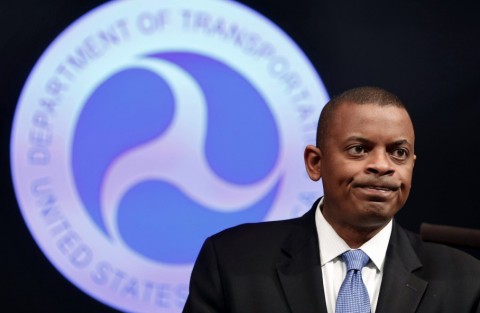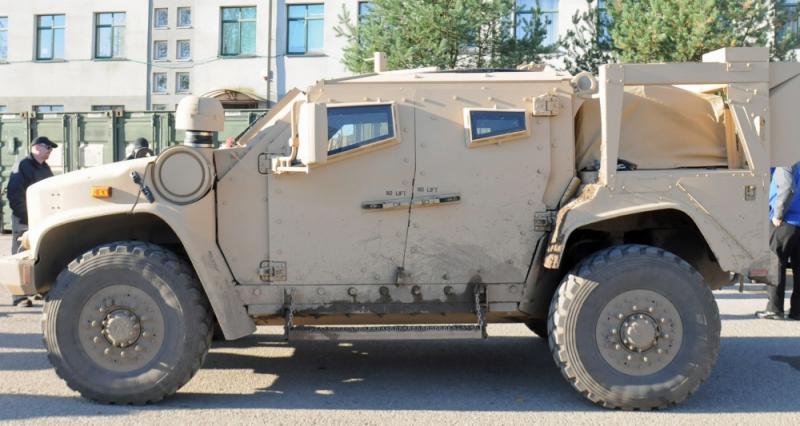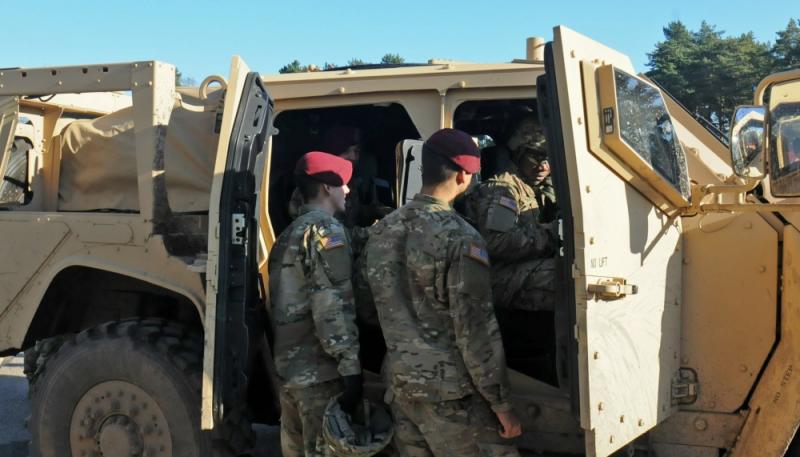
kscarbel2
Moderator-
Posts
17,893 -
Joined
-
Days Won
86
Content Type
Profiles
Forums
Gallery
Events
Blogs
BMT Wiki
Collections
Store
Everything posted by kscarbel2
-
Scania Group Press Release / October 20, 2016 COMPANION is a European Union (EU) funded project within the seventh framework program which has been led by Scania. In the project we have built a prototype for the coordination of vehicles to form platoons and thereby minimising the fuel necessary to transport the goods. .
-
Peterbilt Motors Company Press Release / October 20, 2016 .
-
11th U.S. death related to Takata airbags reported by Honda Automotive News / October 20, 2016 U.S. regulators and American Honda Motor Co. have confirmed the 11th U.S. fatality linked to a ruptured Takata airbag inflator. The victim, a 50-year-old woman, died from injuries sustained during the Sept. 30 crash in Riverside County, Calif., which caused the driver-side Takata airbag inflator in her 2001 Honda Civic to rupture, according to the National Highway Traffic Safety Administration (NHTSA) and Honda. The victim’s vehicle was among the roughly 313,000 model year 2001-2003 Honda and Acura vehicles that NHTSA warned owners in June to stop driving because of a "grave danger" posed by that generation of Takata airbags. That population of vehicles contained Takata inflators that were never replaced under previous recalls and contained a manufacturing defect that elevates the chance that the inflator could rupture in a crash to as much as 50 percent, according to NHTSA. According to Honda, the 2001 Civic’s inflator was first recalled in 2008 but never repaired despite more than 20 notices mailed to the registered owners of the vehicle. The 11th U.S. death adds to the mounting human costs of what has become the largest and most complex safety recall in U.S. history. At least five more fatalities have been reported globally, according to Reuters. Nearly 70 million Takata inflators in U.S. vehicles are or will be recalled through 2019 under a massive recall plan being coordinated by NHTSA. According to the agency, some 11.4 million Takata recalled inflators had been replaced as of Oct. 7, representing about 36 percent of total number of airbags under recall to-date. The deadly defect has been linked to at least 100 injuries in the U.S. alone and put Takata under severe financial duress. Takata’s inflator customers have to fled to rival suppliers and its stock price has tanked in the last two years, prompting the supplier to scramble for a buyer. Potential sale Meanwhile, a list of four suitors for the embattled supplier is expected to be reduced to two following a meeting in New York or Detroit at the end of this month. All 15 of Takata's major customers, including the Detroit 3, Takata executives and its advisory firm Lazard Ltd. and bidders are expected to determine the future of the Japanese supplier. The meetings are expected to be in New York, but executives from the local automakers asked last week to move the agenda to metro Detroit. Suitors for the Tokyo-based supplier of seatbelts and airbags include Michigan-based competitor Key Safety Systems Inc.; Daicel, a Japanese manufacturer of airbag inflators that's jointly bidding with private equity firm Bain Capital; Urbana, Ill.-based supplier Flex 'N Gate and Swedish airbag maker Autoliv Inc.
-
Cultural decay and declining standards of behavior in the United States ------------------------------------------------------------------------------------------------------------------------ Ohio mother murders children Associated Press / October 20, 2016 Ohio mother Brittany Pilkington, age 24, is charged with suffocating her three young sons. She admitted to police that she smothered each boy with a blanket. The married mother-of-four is accused of suffocating her sons over a 13-month period out of jealousy at the attention her husband gave the boys. Authorities say she killed her 3-month-old son Niall in July 2014, his 4-year-old Gavin in April 2015 and 3-month-old Noah in August 2015. The couple's 5-year-old daughter remains in the custody of relatives. Pilkington has pleaded not guilty to three counts of aggravated murder. Her trial is scheduled for late February 2017, and if convicted, she could face the death penalty. In July, Pilkington's husband, 44-year-old Joseph Pilkington, pleaded guilty to sexual imposition for having sex with his wife before they were married and getting her pregnant when she was just 17 years old. Before marrying her, the Joseph Pilkington had been in a long-term relationship with Brittany's mother and had lived with her from the time she was nine. Under the plea deal, the husband was required to register as a sex offender for 15 years. Pilkington is not considered a suspect in his children's deaths. .
-
The engineers who terminated color-coded wiring never had to repair a truck.
-
Draconian actions – 1st Amendment thrown to the curb
kscarbel2 replied to kscarbel2's topic in Odds and Ends
Vandals should be promptly arrested. However, journalists who are merely filming the event (not committing any acts of vandalism), from "outside the enclosure", enjoy the protection of Freedom of the Press. The Standing Rock Sioux tribe has been actively protesting against the pipeline, which would run near its North Dakota reservation. The tribe’s chairman, David Archambault II, said the pipeline, which will run under the Missouri and Mississippi rivers, will “knowingly poison water”. The pipeline was originally meant to run near the city of Bismarck, which has an overwhelmingly white population, before objections resulted in the relocation to Native American (Indian) land. The early settlers of America came from the "Old Country" and committed genocide, the intentional action to destroy a people in whole or in part. Prior to the North American invasion by Europeans, the Sioux tribes alone occupied vast areas of what is now the United States. I say, all things considered, give these people some respect. -
Takata highlights the decline of keiretsu The Financial Times / June 14, 2016 Takata may be reeling from the largest vehicle recall in automotive history, but the components maker’s search for a large investor has generated an unlikely buzz — even before the sale process officially gets under way. Private equity groups including KKR, Bain Capital, and PAG Asia have shown early interest in the lossmaking Japanese group, while media reports suggest Chinese companies may also be willing to lend a hand. But that is pretty much where the good news ends. Investors should be braced for a messy, entangled sale process from here. Takata, one of the world’s largest makers of air bags, has been engulfed in crisis following revelations that some of its products explode and spray shrapnel. Its air bags are linked to at least 13 deaths and more than 100 injuries worldwide, and US regulators have demanded the recall of more than 60m vehicles fitted with Takata’s products. The cost of replacing these airbags could well exceed ¥1tn. As well as being a story of one company’s failures, Takata’s downward spiral is testament to the breakdown of Japan’s keiretsu system of close ties between companies. These arrangements, based on cross shareholdings, allowed both strong and weak companies to grow together, and protected them from hostile bids — particularly from overseas. This has been a feature of the relationship between Japanese manufacturers and their suppliers, especially in times of trouble. But the keiretsu system has faded with globalisation and corporate governance reforms that require companies to take greater account of shareholders’ interests. For example, in March, Sharp was acquired by Hon Hai Precision Industry after one of its main lenders, Mizuho, pushed for Taiwanese investment rather than a bailout by a Japanese government-backed fund. And when Mitsubishi Motors become embroiled in a scandal involving inflated fuel economy figures in April, it was the Nissan-Renault alliance that offered investment to Japan’s sixth largest carmaker — not members of the Mitsubishi group. If it had been a decade ago, Takata, led by chief executive Shigehisa Takada, could have turned to a consortium of Japanese carmakers for help. But any hope of a friendly rescue by the carmakers disappeared in November when Honda, Takata’s biggest customer, turned hostile. Honda publicly accused Takata of manipulating test results for certain vehicles. This rejection is hardly surprising when a car buyer’s decision about buying a Honda vehicle may depend on who made the airbags. But the hard stance also underscores the pressure carmakers are feeling from investors over the impact of recalls on profits. In addition to the fading keiretsu ties, Takata’s appointment of Lazard to find an investor by the autumn signalled to interested private equity firms that the airbag maker is open to a cross-border solution. But while the door may be open, clinching a deal is a different matter. It goes without saying that any Takata investor will need sufficient cash to help the company cope with lawsuits and recall costs. Carmakers are expected to shoulder some of the recall expenses, but it is not clear how much. More importantly, say people involved in the sale process, any investor will need to have a stellar reputation if it is to overhaul Takata’s corporate culture and rebuild its brand from scratch. How many such strategic investors will be out there? Even with an investor, Takata will find itself in something of a chicken and egg situation. For any investor to be able to inject cash into Takata, it will need assurances from carmakers that they will continue to do business with the company. But for carmakers to do that, they need assurances from Takata that the new products it makes will be safe. And the carmakers are not a single entity. Takata’s core customers include more than 10 different carmakers from Japan, Europe and US — and their interests are not aligned. A new Takata investor will also require the blessing of the Japanese government and US safety regulators. “Unfortunately, there is no perfect solution. This is an extremely complicated process that cannot be concluded overnight,” says one person involved in the sale process. And the longer it takes Takata to find an investor, the greater the risk that the company will not survive its crisis to supply those replacement air bags. https://en.wikipedia.org/wiki/Keiretsu
-
Heavy Duty Trucking / October 20, 2016 [Former Charlotte City Mayor and now] Secretary of Transportation Anthony Foxx announced plans to establish an Advisory Committee on Automation in Transportation to help frame federal policy on the development and deployment of autonomous cars and trucks. The committee will assess DOT’s current research, policy, and regulatory support to develop a strategy for safe and effective use of autonomous vehicles on public roads. After analyzing available information, ACAT will present recommendations to the Secretary on automated and connected road and transit vehicle technologies, enhanced freight movement technologies, railroad automated technologies, aviation automated navigation systems technologies, unmanned aircraft systems, and advanced technology deployment in surface transportation environments. ACAT will also focus on emerging and not-yet-conceived innovations to ensure that DOT is prepared for any unexpected and emergent developments in the autonomous vehicle space. “This committee will help determine how, when, and where automated technology will transform the way we move,” said Foxx. “The Department has advanced some of the life-saving benefits of automated technologies, including automated vehicle policy, but we are looking outside the government for innovative and thoughtful leaders to uncover its full potential across all modes.” DOT is currently seeking 15 individuals to sit on the Committee, looking for people with in-depth, cross-industry experience and perspective related to advanced autonomous vehicle technology and innovation. ACAT members will serve 2-year terms and will be nominated through an open process published in the Federal Register. In September, DOT released the first federal guidelines for the testing and deployment of autonomous vehicles, outlining a safety assessment process and setting the groundwork for a comprehensive set of safety standards at the state and federal level. Autonomous vehicles may be closer than you think, with Tesla recently announcing that all of its cars currently in production are equipped with full self-driving hardware. In a release, Tesla claimed that its current system was fully capable of self-driving at a safety level substantially greater than a human driver. Earlier this year, Tesla CEO Elon Musk also announced plans to enter the commercial vehicle space with a battery-electric pickup truck, heavy-duty truck, and bus that would leverage similar autonomous technologies as his passenger cars. Truck manufacturers, including Volvo and Daimler, have shown off working prototypes of autonomous vehicles. In addition, related technologies such as truck platooning are also currently being tested on public roads. Uber has also entered the space with the autonomous driving technology startup Otto, specifically aimed at the long-haul trucking industry. .
-
Two-truck platoons can save fleets big bucks on fuel Truck News / October 20, 2016 Truck platooning has the potential to save carriers a significant amount of fuel and money, according to Jack Roberts of the North American Council for Freight Efficiency (NACFE). Roberts spoke at the Atlantic Provinces’ Trucking Association’s transportation summit this week about the confidence report he put together for NACFE that was released last month. The report focuses on two-vehicle platooning and its ability to reduce fuel consumption by about 4% average across both vehicles. Roberts kicked off his presentation by explaining how truck platooning actually has its roots in NASCAR, where cars would tuck in close to the bumpers of vehicles ahead of them to reduce drag and catch up to the leader. “Drafting was the technique,” he explained. “And it is still a fundamental strategy in NASCAR to this day just like blocking and tackling is in football. And a lot sooner than you probably think, you will be drafting your trucks. But it…will be called truck platooning and it will more than likely be your first hands on introduction to autonomous technology today.” Roberts said he believes that as truck platooning rolls out across the continent, it will be two trucks. “We’ve interviewed countless fleet executives all over the US and Canada, who are test driving the trucks, and we’ve interviewed the OEMs to…paint a complete picture on what can be expected with this technology,” he said. “There is nothing science fiction on this.” Roberts said that every system used in platooning is already on the market today, like in-cab cameras and collision mitigation systems. The confidence report found that with a following distance of 40-50 feet, fleets could save a significant amount of fuel in a two-truck platoon. “The fuel economy benefits are real,” Roberts stressed. “When you talk to vehicle design engineers, there’s just nothing more they can do to squeeze another 6-10% fuel economy out of these trucks. And yet simply by linking up these vehicles together electronically, and driving down the road in a coordinated fashion you can easily get 3% fuel economy increase in the front vehicle, second vehicle generally sees around 7%, and third vehicle is the sweet spot where we’ve seen a saving of 10-15%. We think this is going to be an attractive enough opportunity for the fleets to save some real money.” Of course, with change comes pushback. Roberts explained that there are still a lot of challenges to work past before we will see platoons on our roads, like if drivers are going to be onboard with platooning or if they will have to be paid more to participate. “And then there’s platoon integrity – what happens if vehicles cut in and out of the platoon? How long can these vehicles stay in platoon mode? There’s reliability. And who’s at fault if something goes wrong?,” he said. Roberts added that though platooning is a “gateway” to autonomous technology, it is not a driverless technology. “(Platooning) is being unfairly grouped with autonomous technology,” he said. “Because in platooning the driver is still steering the vehicle.” And though there is still some uncertainty about platooning, Roberts concluded that it is expected to be in the market sooner rather than later. “We have a high degree of confidence that this technology is going to be effective, it’s going to be useful in real-world operations and it will be an easy place for fleets to start,” he said. “Fuel savings are documented, and the technology is available.” You can read the full confidence report here.
-
Heavy Duty Trucking / October 20, 2016 Ford's decision to idle production of its F-150 pickup this week has followed several months of slowing demand in retail and fleet channels and may point to a larger trend in pickup sales. Pickup sales are expected to remain at near record levels and reach 2.19 million in 2016, which would be an increase from the 2.16 million pickups sold in 2015, according to LMC Automotive, J.D. Powers' market research unit. The forecaster expects pickup sales to return to 2.16 million by 2018. "Topline sales forecast is basically flat from 2015 to 2018, so growth is in the rearview mirror for now," said Jeff Schuster, senior vice president of forecasting at LMC Automotive. "Risk is mounting as interest rates are expected to rise, credit could tighten and a large number of off-lease vehicles creates more used car substitutes for new car sales." Schuster described the outlook as "relatively stable" in the near term. "Much of this is due to low fuel prices, an improving economy and housing market as well as the topline holding," he said. "Large pickup share is expected to remain in the 12.4% to 12.6% range, with 2016 at 12.6% and 2018 expected at 12.4%. We do expect competitive pressure to remain high and incentives to be used to drive some volume and share in the truck segment." Strong pickup sales have been driven by a healthy housing market, said Brian Turmail, a spokesman for the Associated General Contractors of America. "There is no doubt that as construction spending continues to remain robust, many construction firms will continue to invest in new trucks," Turmail said. "With construction employment at an eight-year high, construction workers, who make more than the average worker, are in a good position to invest in new personal vehicles too. And if my visits to most construction sites are representative, many of those vehicles will be pickup trucks. They are convenient for work and for weekends hauling the kinds of toys careers in construction afford." Sales of F-Series trucks reached 73,884 in March and crossed the 70,000-unit mark again in April and June. Sales fell to 65,657 in July and reached 67,809 in September. Despite the recent slide, F-Series sales have increased 6% to 595,656 through September, which is the best year-to-date performance since 2006. Ford will idle F-Series production at its Kansas City Assembly Plant the week of Oct. 24 to reduce supply at dealer lots. F-Series production remains unchanged at the Dearborn Truck Plant. "We continue matching production with demand to ensure we are at our targeted inventories by year end," said Kelli Felker, Ford's manufacturing and labor communications manager. Meanwhile, the Chevrolet Silverado has been building momentum in 2016 with sales of more than 50,000 units in July (54,116) and August (52,408). That's after sales started the year near the 40,000-unit level. Sales slid to 45,380 in September. General Motors has been increasing supply of its Silverado and GMC Sierra in recent months, said Jim Cain, a GM spokesman. "We're entering the strongest season of the year for pickup sales," Cain said. "The pickup market is stronger today than it was a year ago. We're carefully managing our inventories. We've had very lean stocks for most of the year. We're finally getting into a much more comfortable range." Fiat Chrysler Automobiles' Ram Truck brand boosted sales in September, in part, by increasing retail incentives for older models. Ram sold 47,792 pickups, an 18.8% increase of 7,590 units from the August level of 40,202. Ram increased year-over-year pickup sales by 29%. Incentive spending has been increasing across the board. In September, average retail incentive spend per unit reached $5,459, an increase from the $4,987 level in September of 2015, according to J.D. Power PIN data. Average incentive per transaction price for Ram, GM, and Ford trucks reached 18.1%, 13%, and 11.8% in September, respectively. Ram Truck views its sales increase as a result of vehicle quality, said Dave Elshoff, a Ram Truck spokesman. "The 29% year-over-year increase in our September pickup truck sales are a good illustration of how the Ram Truck brand is drawing customers with great product," Elshoff said. "Our pickup-truck customers are attracted to Ram’s quality, reliability and durability." Sales of trucks to commercial fleets have slipped in recent months, according to Automotive Fleet data. Truck-based sales fell 20.2% to 33,849 in September and remained flat in August at 42,193. This data combines trucks with SUV and van sales.
-
Sean Kilcarr, Fleet Owner / October 20, 2016 One of the more interesting and indeed famous motorized vehicles in history is the Jeep; a “jack-of-all-trades” piece of military equipment that became a legend in its own time and eventually spawned a civilian version that, to this day, still holds iconic off-road status in the automotive world. The contemporary successor to the fabled jeep is the “High-Mobility Multi-purpose Wheeled Vehicle,” or “HMMWV,” which eventually became known as the “Humvee.” For over 30 years now, the Humvee has, in the words of Sgt. Corinna Baltos with U.S. Army’s 24th Press Camp Headquarters in Rukula, Lithuania, become the “go-to vehicle” for U.S. forces wishing to put “both boots and tires on the ground.” Like the World War II-era jeep, the “Humvee” has become a “cultural icon” as well, she said. And now it, too, is being retired and replaced by a “new Jeep” of sorts: the Light Combat All-Terrain Vehicle or L-ATV, built by Oshkosh Defense, a division of Oshkosh Corp. The L-ATV is part of the $6.7 billion Joint Light Tactical Vehicle (JLTV) program awarded in August last year that is designed to replace a large portion of the legacy HMMWV fleet within the U.S. Army and Marine Corps with a light tactical vehicle that boasts in Oshkosh’s words “far superior protection and off-road mobility.” Oshkosh said expects to deliver approximately 17,000 such vehicles and sustainment services during its contract period, though the new L-ATV won’t be truly “fielded” by U.S. military units until 2019. So remember Sgt. Baltos from earlier? She covered field testing conducted with an L-ATV by paratroopers from the 2nd Battalion/503rd Infantry Regiment within the 173rd Airborne Brigade in Lithuania – a unit known as “The Rock.” Why are they doing such testing? Because paratroopers are going to be the first units to receive the L-ATV as it is light enough to be transported by helicopter. “We found that in Afghanistan the up-armored HMMWV was too big and heavy, and it lost a lot in performance,” noted Lt. Col. Rob Barnhill, product manager-systems integration with the Army’s Joint Program Office (JPO). “We wanted to develop a truck with better underbody protection, and load protection, but one that could still put 3,500 lbs. of payload in it,” added Col. Shane Fulmer, the JPO’s product manager for systems integration. “This vehicle [the L-ATV] fits the bill.” Oshkosh said the new L-ATV will come in two types: a four-passenger combat vehicle and a two-seat combat support vehicle. There’s also an L-ATV utility variant, with a cargo-carrying capacity of 5,100 lbs., is designed to provide mobility for loads such as containers, pallets and break bulk cargo in a wide range of operating environments and threat levels, Oshkosh noted. In addition to hauling cargo, the L-ATV utility variant can be outfitted as a shelter carrier to carry standard shelters for communications systems, on-board electronics and other functions, the company added. This “new Jeep” didn’t just spring into existence overnight, either; it results from a nearly 11-year design and development process, Oshkosh noted: 2005: Oshkosh begins developing its TAK-4i independent suspension system; 2007: Oshkosh develops the Light Combat Tactical Vehicle (LCTV) technology demonstrator; 2010: The Oshkosh LCTV completes the Baja 1000 desert off-road race; the first military-class vehicle to do so; 2011: Oshkosh evolves its design and introduces L-ATV variant within its JLTV platform; 2012: U.S. Government awards Oshkosh one of three JLTV Engineering and Manufacturing Development (EMD) contracts; 2013: Oshkosh builds its JLTV EMD prototypes and delivers them to the U.S. Army for testing and evaluation; 2014: Oshkosh’s JLTV prototypes successfully complete all requirements, testing and evaluation; 2015: Oshkosh is awarded the JLTV Production contract. It is interesting to note that L-ATV can also be equipped with a ProPulse hybrid diesel-electric drive train with 70 kilowatts of on-board and “exportable power” to boost its functionality, efficiency and fuel economy. “Looking ahead, future battlefields will generate an unpredictable combination of terrain, tactics and threats," noted Oshkosh Defense President John Bryant, who is also a retired Marine Colonel. "Our JLTV and M-ATV platforms can be configured with the protection and mission equipment to support both defensive and offensive operations outside-the-wire.” That’s some kind of new jeep, let me tell you. .
-
Weaker Commercial Truck Market Clips Earnings at Dana Inc. Transport Topics / October 20, 2016 Commercial vehicle supplier Dana Inc. reported third-quarter earnings of $57 million, or 39 cents per share, compared with $119 million, or 75 cents, a year earlier, which reflected a $100 million tax benefit. Sales totaled $1.38 billion, compared with $1.47 billion in the 2015 period, the Maumee, Ohio-based company said Oct. 20. Sales at its commercial vehicle driveline technologies business were $294 million, down 20% compared with $367 million in the 2015 period. Dana attributed the bulk of the $73 million decline to weaker Class 8 truck production in North America and, to a lesser degree, to the transfer of a customer program to its light vehicle driveline unit, which accounted for $13 million. It said the commercial driveline segment’s earnings before interest taxes depreciation and amortization was $23 million, $8 million lower than 2015, resulting in a margin of 7.8%. Dana forecast North American heavy-duty truck production in 2016 would fall to 220,000 to 230,000 units, compared with 323,000 in 2015. Medium-duty production was expected to be 230,000 to 240,000 in 2016, compared with 237,000 last year, Dana said. Dana affirmed its full-year guidance of sales of $5.7 billion and earnings per share of $1.75.
-
FYI - The latest and largest Takata air bag recall The issue involves defective inflator and propellent devices that may deploy improperly in the event of a crash, shooting metal fragments into vehicle occupants. At least 34 million vehicles are potentially affected in the United States, and another 7 million have been recalled worldwide. The New York Times has published a report suggesting that Takata knew about the airbag issues in 2004, conducting secret tests off work hours to verify the problem. The results confirmed major issues with the inflators, and engineers quickly began researching a solution. But instead of notifying federal safety regulators and moving forward with fixes, Takata executives ordered its engineers to destroy the data and dispose of the physical evidence. This occurred a full four years before Takata publicly acknowledged the problem. http://www.nytimes.com/2014/11/07/business/airbag-maker-takata-is-said-to-have-conducted-secret-tests.html?_r=0 Affected U.S. market vehicles: Acura: 2002–2003, 2009–2014 TL; 2003 CL; 2003–2006 MDX; 2005–2012 RL; 2007–2016 RDX; 2009–2011 TSX; 2010–2013 ZDX; 2013–2016 ILX Audi (approximately 387,000): 2004–2008 A4; 2005–2011 A6; 2006–2013 A3; 2006–2009 A4 cabriolet; 2009–2012 Q5; 2010–2011 A5 cabriolet; 2015 Q5 BMW (1,968,283): 2000–2011 3-series sedan; 2000–2012 3-series wagon; 2002–2013 3-series coupe and convertible; 2001–2013 M3 coupe and convertible; 2002–2003 5-series and M5; 2003–2004, 2007–2013 X5; 2007–2010 X3; 2008–2013 1-series coupe and convertible; 2008–2011 M3 sedan; 2008–2014 X6; 2013–2015 X1 Buick: 2015 LaCrosse Cadillac: 2007–2011 Escalade, Escalade EXT, and Escalade ESV; 2015 XTS Chevrolet (approximately 1.91 million, including Buick, Cadillac, GMC, Saab, and Saturn): 2007–2011 Silverado 1500, Avalanche, Tahoe, and Suburban; 2007–2011 Silverado HD; 2015 Camaro, Equinox, and Malibu Chrysler: 2005–2012 300; 2006–2007 Crossfire; 2007–2009 Aspen Daimler: 2006–2009 Dodge Sprinter 2500 and 3500; 2007–2014 Freightliner Sprinter 2500 and 3500 Dodge/Ram (more than 5.64 million, including Chrysler, not including Daimler-built Sprinter): 2003–2008 Ram 1500; 2003–2010 Ram 3500; 2005–2012 Charger; 2005–2010 Magnum; 2005–2011 Dakota; 2004–2009 Durango; 2003–2009 Ram 2500; 2008–2012 Challenger; 2008–2010 Ram 4500 and Ram 5500; 2008–2009 Sterling Bullet 4500 and 5500 Ferrari (2820): 2009–2011 California; 2010–2011 458 Italia Ford (2,799,546, including Lincoln and Mercury): 2004–2011 Ranger; 2005–2006 GT; 2005–2014 Mustang; 2006–2011 Fusion; 2007–2010 Edge GMC: 2007–2011 Sierra HD; 2015 Terrain Honda (approximately 10.7 million, including Acura): 2001–2007 Accord (four-cylinder), 2001–2002 Accord (V-6), 2008–2011 Accord; 2001–2011 Civic; 2002–2011, 2016 CR-V; 2002–2004 Odyssey; 2003–2005 Civic Hybrid; 2003–2011 Element; 2003–2011 Pilot; 2006–2010 Gold Wing motorcycle; 2006–2014 Ridgeline; 2007–2014 Fit; 2010–2011 Accord Crosstour; 2010–2014 FCX Clarity; 2010–2014 Insight; 2011–2015 CR-Z Infiniti: 2001–2004 I30/I35; 2002–2003 QX4; 2003–2008 FX35/FX45; 2006–2010 M35/M45 Jaguar (approximately 40,000): 2009–2011 XF Jeep: 2007–2012 Wrangler Land Rover (approximately 68,000): 2007–2011 Range Rover Lexus: 2002–2010 SC430; 2006–2011 IS; 2007–2011 ES; 2010–2011 GX Lincoln: 2006–2011 Lincoln Zephyr and MKZ; 2007–2010 Lincoln MKX Mazda (more than 733,000): 2003–2011 Mazda 6; 2006–2007 Mazdaspeed 6; 2004–2011 RX-8; 2004–2006 MPV; 2004–2009 B-series; 2007–2011 CX-7 and CX-9 Mercedes-Benz (1,044,602, including Daimler): 2005–2014 C-class (excluding C55 AMG but including 2009–2011 C63 AMG); 2007–2008 SLK-class; 2007–2014 Sprinter; 2009–2012 GL-class; 2009–2011 M-class, 2009–2012 R-class; 2010–2017 E-class sedan, wagon, coupe, and convertible; 2010–2015 GLK-class; 2011–2015 SLS AMG coupe and roadster Mercury: 2006–2011 Milan Mitsubishi (more than 105,000): 2004–2007 Lancer and Lancer Evolution; 2006–2009 Raider Nissan (more than 1,091,000, including Infiniti): 2001–2003 Maxima; 2002–2004 Pathfinder; 2002–2006 Sentra; 2007–2011 Versa Pontiac (approximately 300,000): 2003–2007 Vibe Saab: 2003–2011 9-3; 2005–2006 9-2X; 2010–2011 9-5 Saturn: 2008–2009 Astra Scion: 2008–2011 xB Subaru (more than 380,000): 2003–2005, 2009–2011 Legacy and Outback; 2004–2011 Impreza; 2005–2006 Baja; 2006–2011 Tribeca; 2009–2011 Forester Toyota (approximately 4,697,000, including Lexus and Scion): 2002–2007 Sequoia; 2003–2011 Corolla and Corolla Matrix; 2003–2006 Tundra; 2004–2005 RAV4; 2006–2011 Yaris; 2010–2011 4Runner; 2011 Sienna Volkswagen (680,000): 2006–2010, 2012–2014 Passat; 2009–2014 CC; 2010–2014 Jetta SportWagen and Golf; 2012–2014 Eos; 2015 Tiguan
-
Automotive News / October 20, 2016 Dana Inc., the longtime supplier of various drivetrain components, today reported net income of $57 million in the third quarter, down 52 percent from the year-earlier period as sales from its commercial-vehicle units fell again. The company noted, however, that the year-earlier period included a $100 million tax benefit “from the release of certain U.S. deferred tax valuation allowances and a $24 million after-tax impairment charge.” When adjusting for those items, third-quarter net income increased compared with last year. Earnings before expenses such as interest and taxes improved by $1 million to $168 million, the company said. The supplier, based near Toledo, Ohio, posted third-quarter sales of $1.38 billion, down 6 percent from the year earlier period. "Dana posted a solid quarter overall despite continued macro headwinds, which we believe will come as somewhat of a relief given the negative sentiment that seemed to be building into the quarter," analysts from Barclays wrote in a report today. Commercial-vehicle driveline sales tumbled 20 percent from the year-earlier period to $294 million in the third quarter. Dana blamed the decline to weaker Class 8 truck production in North America and the transfer of a customer program to light-vehicle driveline reduced sales by $73 million. Light-vehicle driveline sales rose 4 percent to $631 million in the third quarter. Similarly, Dana’s power technologies unit reported sales of $260 million, also up 4 percent from the year earlier period. On Aug. 1, the company formally changed its name from Dana Holding Corp. to Dana Inc. Earlier this month, Dana announced that it reached an agreement to buy Brazilian forged-components supplier Sifco S.A. "This is an opportune time to invest in strategic and selective assets in Brazil that will further strengthen our position as one of the most trusted, top-tier suppliers to the mobility industry -- thus positioning us for future profitable growth throughout the region," CEO James Kamsickas said in a statement. The transaction is expected to be completed by the end of the year. Dana ranks No. 39 on Automotive News’ list of the top 100 global suppliers, with worldwide parts sales to automakers of $6.1 billion in 2015.
-
The U.S. approach thus far amounts to ignoring Duterte and pretending we can quietly our military and strategic operational activities. Shocking. I have zero tolerance for a foreign country’s leader calling a U.S. president “the son of a whore”. It is not an internationally-accepted norm of behavior. It is an unforgiveable slap in the face to all Americans. If it were me, I would refuse to play Duterte’s game.....and walk away. I would withdraw all U.S. military forces and shut down the U.S. embassy. I can play games too. In a New York minute, the vast support for Duterte in the Philippines would probably end. I would also announce the end of “preferential” immigration policies for Philippine nationals, resulting from Mr. Duterte’s respected “decision” to move away from the United States. He has a right to navigate in any direction he wishes.......as well do we. The United States brought prosperity to the Philippines prior to WW2, and returned at great cost of American life to rid the country of Japanese invaders. We then granted them independence [and the country has been a cesspool of corruption and chaos ever since, e.g. Ferdinand Marcos].
-
The Guardian / October 20, 2016 Two documentary film-makers are facing decades in prison for recording US oil pipeline protests, with serious felony charges that first amendment advocates say are part of a growing number of attacks on freedom of the press. The controversial prosecutions of Deia Schlosberg and Lindsey Grayzel are moving forward after a judge in North Dakota rejected “riot” charges filed against Democracy Now! host Amy Goodman for her high-profile reporting at the Dakota Access pipeline protests. But authorities in other parts of North Dakota and in Washington state have continued to target other film-makers over their recent reporting on similar demonstrations, raising concerns that the lesser-known journalists are not getting the same kind of public support and national attention. Schlosberg, a New York-based film-maker, is facing three felony conspiracy charges for filming protesters on 11 October at a TransCanada Keystone Pipeline site in Pembina County in North Dakota, with prosecutors alleging that she was “recruited to record the criminal activity”. The 36-year-old, who is producing a documentary, could face 45 years in prison. US whistleblower Edward Snowden recently voiced support of Schlosberg, writing: “This reporter is being prosecuted for covering the North Dakota oil protests. For reference, I face a mere 30 years.” Grayzel, a film-maker from Portland, Oregon, was also arrested and jailed on 11 October while filming at a separate pipeline protest in Skagit County, Washington. She and her cinematographer, Carl Davis, had their footage and equipment seized and were kept behind bars for a day. The two were filming activist Ken Ward attempting to shut down the Trans Mountain pipeline, and they now face 30 years in prison for a felony burglary charge, a felony “criminal sabotage” charge and a misdemeanor trespass offense. There were a series of pipeline protests across the US on 11 October. “Everyone needs to be afraid when our first amendment rights are in jeopardy,” Grayzel, 41, said Thursday before her criminal arraignment. “This is not just about me. This is not just about Carl. This is not about Amy Goodman … This is about the public’s right to know what is going on in this country.” Free-speech advocates said that both cases are unusual and troubling given that prosecutors have admitted that the defendants were acting as film-makers and yet are still pursuing aggressive felony cases. While it’s not uncommon for journalists to face arrest and misdemeanor charges for trespassing or disorderly conduct while reporting at controversial protests, conspiracy, burglary and sabotage offenses are rare for members of the media. “It’s outrageous. It’s an assault on the first amendment,” said Neil Fox, one of Grayzel’s attorneys. “It’s shocking, but it is the kind of climate that we’re living in right now.” Although Ward, a climate activist, had gained access to a fenced enclosure owned by the Trans Mountain Pipeline, the Skagit County sheriff’s report noted that Grayzel and her cinematographer were “just outside the enclosure … taking photographs and video”. The report said they confiscated the film-makers’ phone and “assorted camera equipment”, actions that have raised further concerns about press intimidation and free speech violations. Washington prosecutors are relying on laws that were passed in the early 20th century to target labor rights’ protesters, Fox added. “There’s been a revival in the state of Washington of the use of these statutes against labor activists and against environmental activists.” In Goodman’s case, a judge forced prosecutors to drop a serious “riot” charge, which was centered on Goodman’s viral coverage of the intense Native American-led protests. But prosecutors and sheriff’s officials said they may continue to pursue other charges against the critically acclaimed journalist. In Schlosberg’s charges, North Dakota prosecutors have alleged that she was part of a conspiracy, claiming she traveled with protesters “with the objective of diverting the flow of oil”. “I was surprised at the conspiracy charges. I never thought that would ever happen,” her attorney Robert Woods said. “All she was doing was her job of being a journalist and covering the story.” Prosecutors in both cases refused to comment.
-
I enjoy Australia's version of "The Queen's English" (grammatically correct and coherent written expression in the English language). It's a good bit clearer than a Cockney or Geordie accent, or Welsh English.
-
CNN / October 20, 2016 Philippine President Rodrigo Duterte's surprise announcement of a military and economic "separation" from the US during a visit to Beijing Thursday left the Obama administration scrambling, as it raised questions about the US role in the region and threatened a realignment of US relationships in Asia. Duterte's declaration is the latest indication that the Philippines' president, just five months into his six-year term, intends to reshape his country's ties to its closest ally by doubling down on his pivot away from the US and toward China. "America has lost," Duterte said at a business forum Thursday during a four-day state visit to Beijing. "I've realigned myself in your ideological flow and maybe I will also go to Russia to talk to Putin and tell him that there are three of us against the world -- China, Philippines and Russia. It's the only way." “With that, in this venue, I announce my separation from the United States, both in military, not maybe social, but economics also,” Duterte said to applause. “I have separated from them. So I will be dependent on you for all time. But do not worry. We will also help as you help us.” During a speech addressing the Filipino community in Beijing Wednesday, Duterte said the Philippines had gained little from its long alliance with the US, its former colonial ruler. “Your stay in my country was for your own benefit. So time to say goodbye, my friend,” he said, as if addressing the US. He also repeated his denunciation of Obama as a “son of a whore”. China, he said earlier, was “good”. “It has never invaded a piece of my country all these generations.” [In 2012, China seized control of Scarborough Shoal, a fishing ground in the Philippines’ exclusive economic zone.] Duterte statement from 0:20
-
Jakarta attacks: ISIS bombmaker smiles after 10-year sentence BBC / October 20, 2016 An Indonesian man has been jailed for 10 years for his role in a bomb and gun attack in Jakarta in January. Four civilians died in the terror attack, the country's worst in years. Dodi Suridi, 23, an ISIS supporter, helped make one of the bombs used on the day. He said he accepted the verdict as "the risk of being a terrorist". Five assailants were killed by police during the attack and about 40 have since been arrested. Prosecutors said Suridi altered gas canisters to provide bombs for two attackers who blew themselves up at a police post. He was arrested the day after the attack. A second ISIS supporter, 48-year-old Ali Hamka, was jailed for four years for attempting to source guns and ammunition for the attack. Hamka did not obtain the guns but was still found guilty of breaking anti-terror laws. As he was led away from court, Suridi shouted "Allahu akbar", Arabic for God is great, and smiled at journalists in the court. Judge Achmad Fauzi said his actions had "disturbed the community and shaken the life of our nation". He and Hamka both made a gesture which represents the oneness of God but has now come to be associated with ISIS, pointing one finger towards the sky. The attack in January was the first attack linked to ISIS in south-east Asia but Indonesia has since suffered several attacks carried out under the group's banner. As Suridi and Hamka were appearing in court on Thursday, a man carrying a machete, suspected pipe bombs and an ISIS symbol launched an attack on officers near Jakarta before being shot dead by police. .
-
Dealer can't find my truck
kscarbel2 replied to m16ty's topic in Antique and Classic Mack Trucks General Discussion
I suggest you call Watt's Mack (1-888-304-6225) or Worldwide Equipment in Chattanooga (423-698-4093). From your experience, it seems the parts people at McMahon Truck Center is challenged in researching your truck (RD822SX-1100). Worldwide (Chattanooga) is closer. Watt's should give you a BMT discount but the shipping charge will be greater. Your choice. -
Cruiseliner headlight panel
kscarbel2 replied to Paul525V8's topic in Exterior, Cab, Accessories and Detailing
Paul, were you able to get your 58QY59301 headlamp panels (pockets) from Mack Australia ? -
Any trucking company would be well set with drivers like her (Jess Edwards). Great video.
-
Navistar extends engine supply agreement with PSI
kscarbel2 replied to kscarbel2's topic in Trucking News
If Roger Penske wanted 8.8's in Durastars, International would say "yes sir!"
BigMackTrucks.com
BigMackTrucks.com is a support forum for antique, classic and modern Mack Trucks! The forum is owned and maintained by Watt's Truck Center, Inc. an independent, full service Mack dealer. The forums are not affiliated with Mack Trucks, Inc.
Our Vendors and Advertisers
Thank you for your support!













